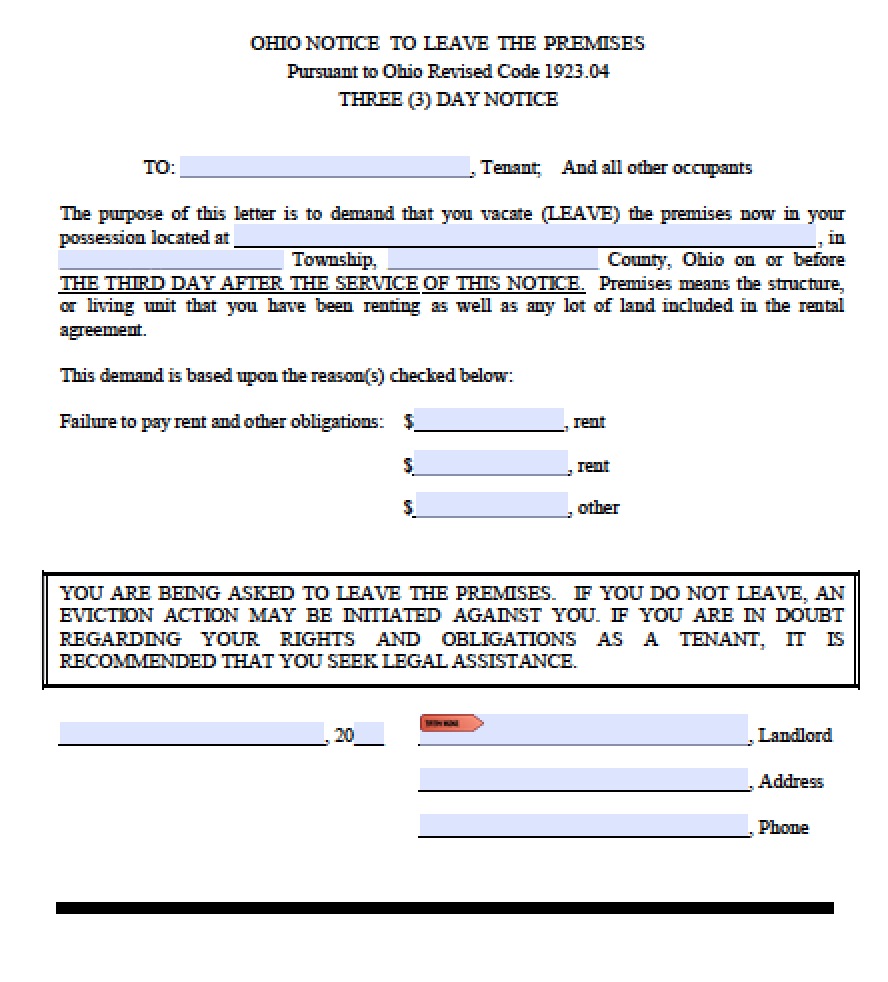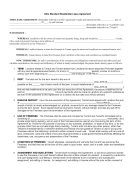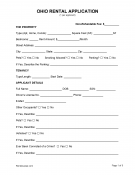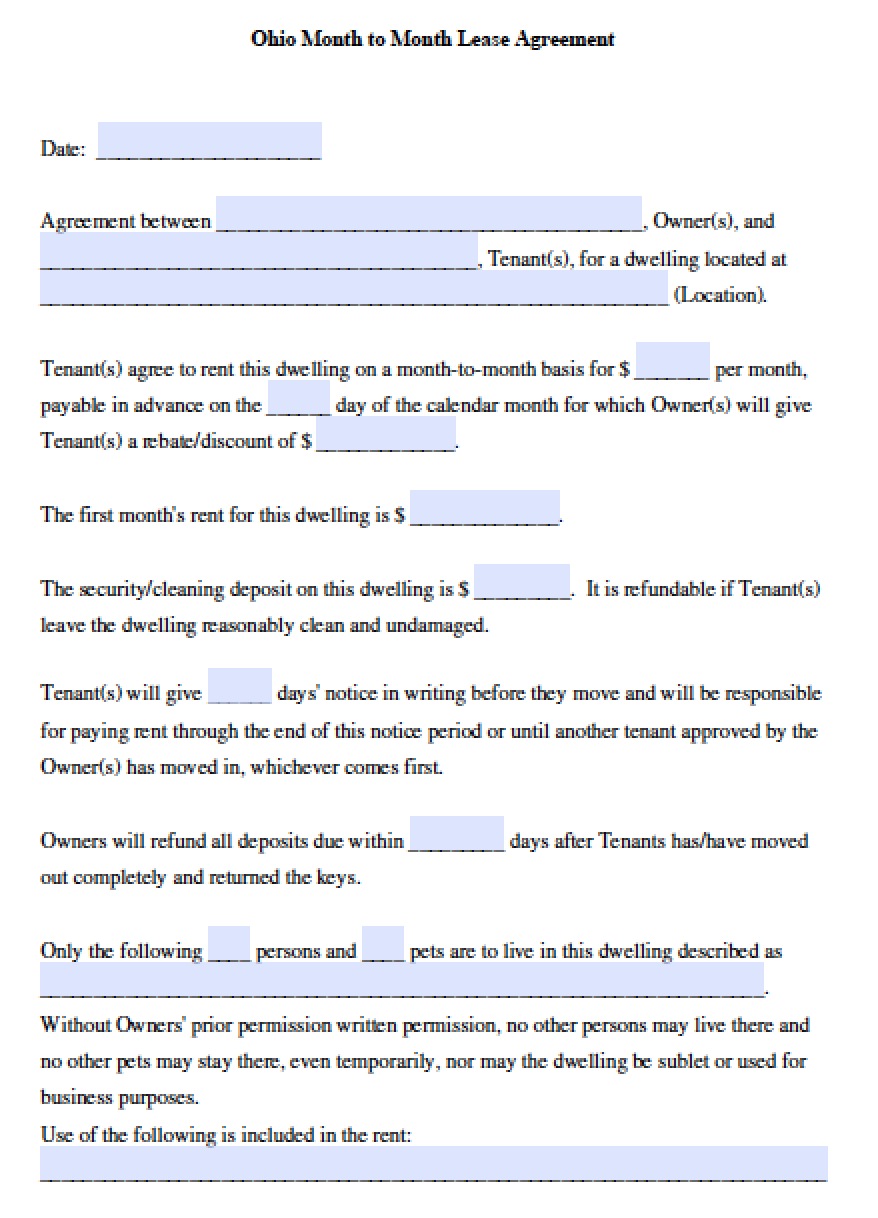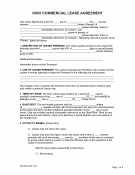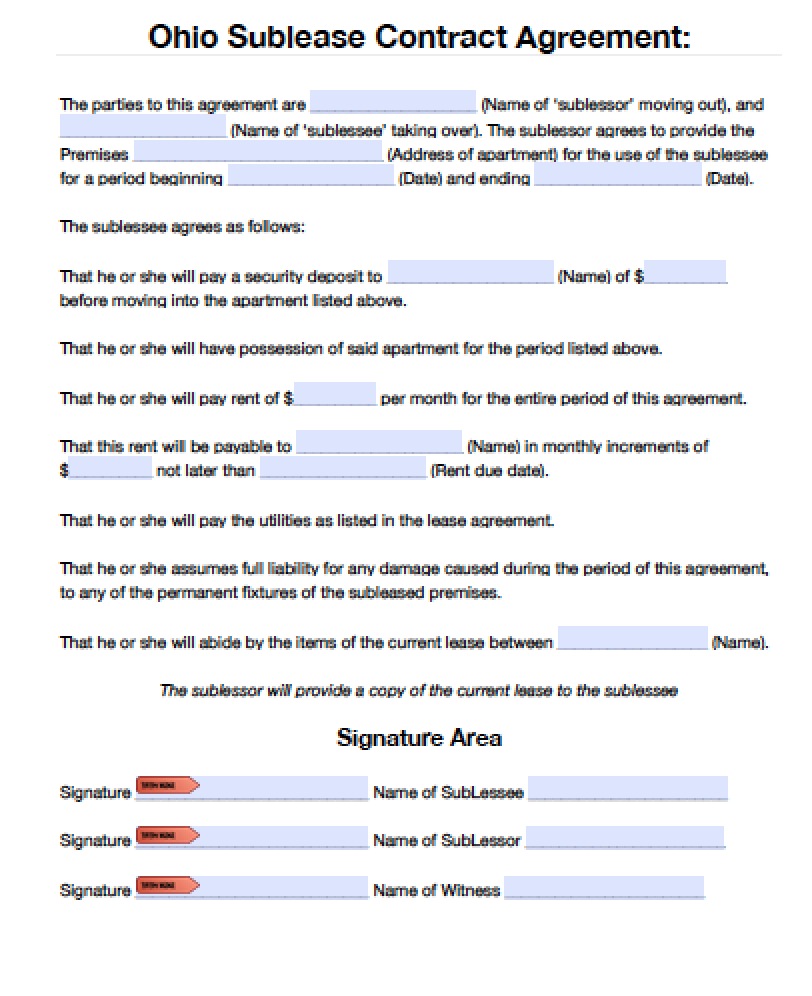The Ohio rental lease agreements are used to establish the rental conditions for an individual or entity seeking to occupy a commercial or residential space. The party occupying the space, the “lessee,” will agree to pay rent to the party that owns the real estate, the “lessor,” during the period of the lease. The lessor will typically request any potential lessee’s credit and background information via the completion of a rental application. This background check assures the lessor that the applicant can afford the rent payments and that they have a history of paying their bills on-time. Once approved, the lease may be signed and any deposits required on behalf of the lessee can be transferred.
Ohio Rental Lease Agreement Templates | PDF
Ohio Lease Agreements
The Ohio three (3) day notice to quit for the nonpayment of rent, otherwise known as the “Notice to Leave the Premises,” is served upon a tenant who is behind on their rent payments. The form must follow § 1923.04(a) which gives the tenant a three (3) day period to either move out or pay the overdue amount. If they choose to do neither, they may face a legal eviction by the landlord and be forced to pay for legal…
The Ohio standard residential lease agreement is a one (1) year contract for the rental of a livable space by a tenant. In return for using the premises, the tenant will be required to pay a monthly amount which may include the cost of utilities. The tenant will also need to abide by any terms and conditions stated in the contract. Landlords should take caution with every potential lessee by screening them with the rental application to review their credit,…
The Ohio rental application is a vital tool used by landlords and property managers to review a tenant’s credit, background, and income activity while also verifying their references. The landlord may charge a fee for processing the background check if they so desire (usually between $20 to $50). Once complete, the tenant will be called to further negotiate the lease terms and, if both parties come to an agreement, sign the lease to authorize the contract. Note that the applicant…
The Ohio month-to-month rental agreement is a special type of contract that has no predetermined end date and may be terminated by either the landlord or tenant with at least thirty (30) days’ notice. Despite the unique nature of this type of tenancy, the landlord and tenant will be bound by the same eviction procedures that govern fixed-term leases. Therefore, it is imperative that the property owner/manager ask the lessee for their personal information and income credentials with the rental…
An Ohio commercial lease agreement allows a landlord and tenant to come to terms over the renting of property for business purposes. The rental space is most commonly sought by the tenant for office, industrial, or retail use. Before the landlord binds themselves to a long-term arrangement, it is advised that the tenant be put through a financial verification check with the rental application. In addition, if there is an entity involved, the company’s profile should be viewed at the…
The Ohio sublease agreement is a real estate document used by tenants that have already signed a lease agreement with a landlord and would like to rent the same space to someone else. The tenant will be required to obtain permission from the landlord if there is no clause in the rental agreement that dictates whether they are allowed to take on sublettors. The sublessor should be aware that they will be held responsible for all actions (or inactions) made…
STATE DISCLOSURES
Identification (§ 5321.18) – Stated in the lease must be the name, address, and telephone number of the owner and any agent/manager acting on behalf of the lessor.
Lead-Based Paint – Used to provide tenants with information regarding the use of lead-based paint in a rental space. This form must be provided to tenants in all residential buildings constructed prior to 1978.
SECURITY DEPOSITS
Maximum – At a State level, there is no cap on how much a landlord may charge a tenant for a security deposit.
Returning (§ 5321.16) – The landlord shall give back the funds thirty (30) days after the tenant has moved from the premises.
LANDLORD'S ACCESS/ENTRY
The landlord must grant the lessee at least twenty-four (24) hours' notice before entering the property for any scheduled maintenance (§ 5321.04).

